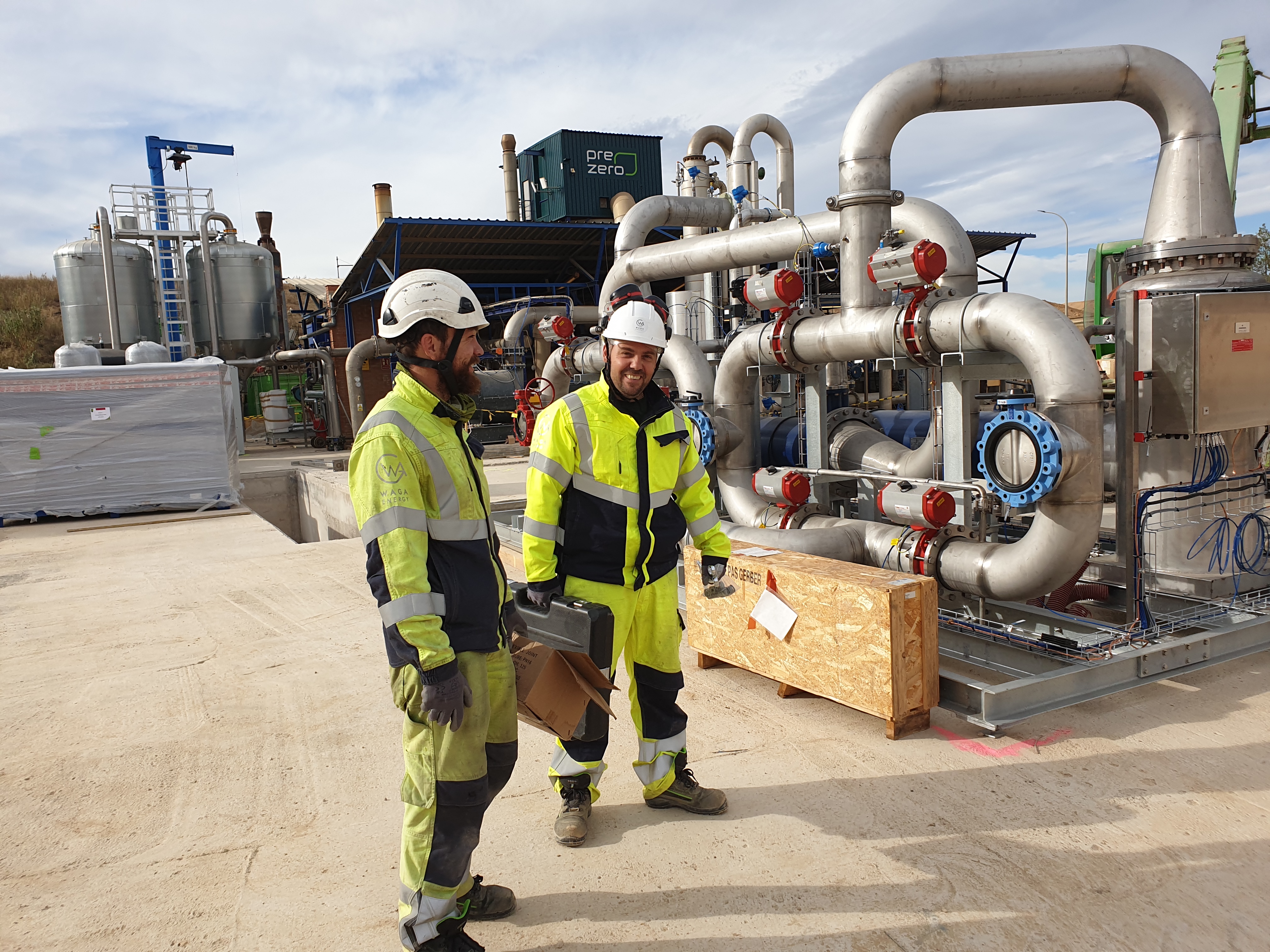
As of June, Waga Energy, a specialist in the production of Renewable Natural Gas (RNG) at landfill sites, and PreZero, a leading Spanish supplier of waste treatment and environmental services, have started an RNG production unit at the Can Mata site located at Els Hostalets de Pierola, around 40 km from Barcelona (Catalonia region). The renewable gas produced, using the forefront WAGABOX® technology, is injected directly into the gas grid operated by Nedgia, the Naturgy group’s gas distribution company, via a 6 km pipeline built as part of this project.
The WAGABOX® unit will yield 70 GWh of RNG per year, equivalent to the consumption of 14,000 households or fuelling 200 buses. The commissioning of the unit will avoid the emission of 17,000 tonnes of CO2equivalent per year by replacing fossil natural gas[1], equivalent to the annual emissions of around 10,000 gasoline-powered cars. The facility has obtained ISCC EU certification, demonstrating that its production complies with the sustainability and greenhouse gas emission reduction criteria defined by the EU RED II Directive[2].
The construction and maintenance of the unit have been originally financed by Waga Energy and then refinanced by a bank loan and the Innovation Fund, financed by the EU Emissions Trading System revenues. The project benefits from a long-term RNG private purchase agreement. The project received a €2.4 million grant under the Innovation Fund, the EU programme designed to promote the deployment of net-zero and innovative technologies.
Spanning 78 hectares, Can Mata is one of the largest landfill sites in Spain. Operated by PreZero, the site treats urban and industrial waste generated in Barcelona and the surrounding area. Over three decades, this site has stored over 22 million tonnes of waste, producing an annual output of around 40 million cubic metres of gas, recovered until now in the form of electricity and heat. The commissioning of the WAGABOX® unit will significantly increase the site’s energy generation capacity.
WAGABOX® is a breakthrough technology that makes it possible to produce pipeline-quality biomethane from landfill gas. It opens access to a huge and almost untapped field of renewable energy: there are about 20,000 landfills in the world, which could produce 1,100 TWh of biomethane each year. Until now, most of this gas was flared or released into the atmosphere, contributing to global warming as methane is a significantly more powerful greenhouse gas than carbon dioxide. Additionally, the project can be replicated in other locations in Europe contributing to the circular economy and the EU Green Deal goals.
[1] Estimate based on comparative non-renewable and renewable natural gas emission factors in France according to French energy agency ADEME’s carbon database and factoring in direct and indirect emissions.
[2] Directive (EU) 2018/2001 of December 11, 2018, on the promotion of the use of energy from renewable sources.
- Start date
- 1 Jan 2022
- Project locations
- Spain
- Project website
- Waga 4 World (W4W)
